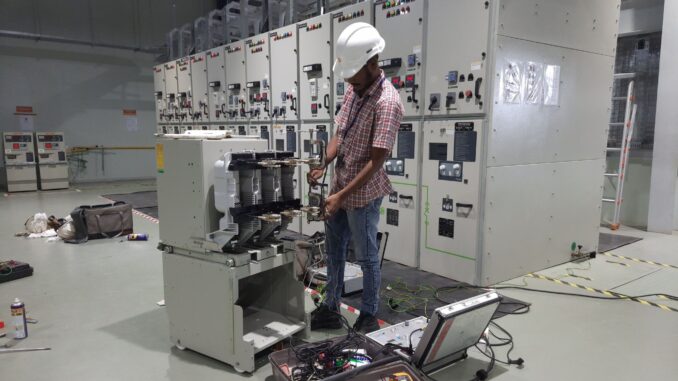
The global energy landscape is undergoing rapid transformation due to urbanization, renewable energy integration, digitalization, and sustainability goals. Switchgear technology must evolve to meet these challenges.
Here are the most prominent trends shaping the future:
1. Digital Switchgear
- Definition: Switchgear integrated with IoT sensors, intelligent relays, and communication systems.
- Features:
- Real-time monitoring of currents, voltages, and breaker status.
- Predictive maintenance using data analytics.
- Remote control via SCADA and cloud platforms.
- Benefits:
- Improves reliability.
- Reduces downtime.
- Optimizes asset management.
2. Eco-Friendly Alternatives to SF₆ Gas
- SF₆ has a very high Global Warming Potential (GWP).
- Research and development are focused on green alternatives such as:
- Dry air and CO₂ mixtures.
- Fluoronitrile-based gases (e.g., g³ gas by GE).
- Vacuum interrupters replacing SF₆ breakers in GIS.
- Regulatory bodies in Europe and Asia are phasing out SF₆, pushing manufacturers to adopt new solutions.
3. Hybrid Switchgear Solutions
- Combining the best of AIS (Air-Insulated Switchgear) and GIS.
- Reduces cost while maintaining compactness.
- Example: Hybrid substations using air-insulated busbars with gas-insulated breakers.
4. Compact & Modular Designs
- Modern substations demand modularity for easy expansion.
- Future designs will focus on plug-and-play modules, reducing installation time and costs.
- Prefabricated and containerized substations are gaining popularity.
5. Integration with Renewable Energy Systems
- Wind and solar farms require switchgear that can handle fluctuating loads and reverse power flows.
- VCB-based switchgear is ideal due to its fast switching and long endurance.
- GIS is also used in offshore wind farms for compactness and durability.
6. Smart Grid Compatibility
- Switchgear will become an integral part of the smart grid ecosystem.
- Features include:
- Self-healing grids (automatic fault isolation and restoration).
- Integration with energy storage systems.
- Demand-response capabilities for balancing loads.
7. Safety Enhancements
- Arc-resistant enclosures to protect operators.
- Advanced thermal imaging sensors to detect hot spots before failure.
- Remote operation to minimize human exposure to high-voltage equipment.
8. Extended Life and Sustainability
- Manufacturers are designing switchgear with a 40–50 year lifespan.
- Recycling and circular economy principles are being applied to recover metals and insulation materials.
- Emphasis on low-maintenance, eco-friendly solutions.
